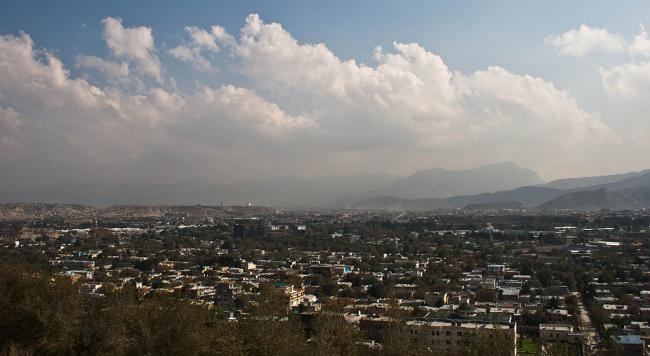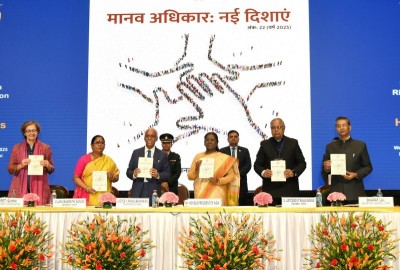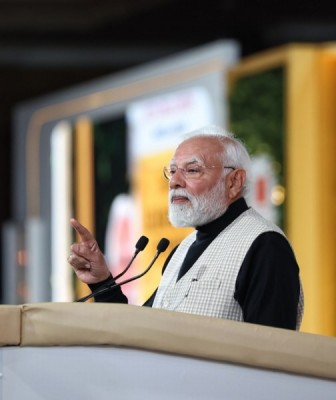
Violent Surge
Significantly, over a fortnight earlier, on August 7, 2016, two professors of the same university - an American and an Australian - were abducted at a gun point from near the University campus. Their whereabouts are still unknown.
No terror outfit has so far claimed responsibility for either incident.
On July 23, 2016, at least 80 people, mostly civilians, were killed and another 231 were injured in a suicide attack that targeted Hazara Shias sitting on a protest demonstration in Kabul. The protestors were demanding that the Afghan Government change its decision to reroute the 500-kilovolt TUTAP (Turkmenistan, Uzbekistan, Tajikistan, Afghanistan and Pakistan) power line. The Government had reportedly decided to re-route the power line, which was originally set to pass through the Bamiyan Province, home to the Hazara community, through Salang in Parwan Province, arguing that it would speed up the project and save millions of dollars. Worryingly, the Islamic State (IS) which was hitherto largely confined to the eastern province of Nangarhar, claimed responsibly for the attack, indicating possibilities of a dangerous spread of its influence in a country which is already amidst turmoil created by the Taliban and its affiliates. The turf war between IS and the Taliban, which had been limited to the Nangarhar Province, is expected to spread into other areas, resulting in more violence.
The midyear report on the Protection of Civilians in Armed Conflict in Afghanistan for 2016, prepared by the Human Rights Unit of the United Nations Assistance Mission in Afghanistan (UNAMA), which covers the period from January 1 to June 30, published on July 25, 2016, indicates that at least 5,166 civilians suffered casualties - 1,601 deaths and 3,565 injuries - during this period. It is the highest number of such casualties recorded during the first six months of a year since 2009, when UNAMA began systematically documenting civilian casualties. During the corresponding period of 2015, at least 4,982 persons had suffered casualties - 1615 deaths and 3,367 injured. More worryingly, out of 5,166 casualties recorded in 2016, at least 1,509 were children (388 dead and 1,121 injured) - a figure the UN Human Rights Chief described as "alarming and shameful," particularly as it represents the highest numbers of children killed or wounded in a six-month period since 2009.
Moreover, reports indicate that fatalities among the Afghan National Defense Security Force (ANDSF) personnel have also increased sharply. The Special Inspector General for Afghanistan Reconstruction (SIGAR) in its Quarterly report (April 30, 2016) submitted to the United States Congress stated that at least 6,637 personnel were killed and another 12,471 were injured through 2015. The report added that, in the first two months of 2016, an additional 820 ANDSF personnel were killed and 1,389 were wounded.
On July 28, 2016, Gen. John Nicholson, Commander Resolute Support Mission in Afghanistan, without disclosing exact figures, stated that the number of ANDSF personnel killed till that time in 2016 was about 20 per cent higher than during the same period of the preceding year. Significantly, ANDSF assumed full security responsibility at the end of 2014, when the International Security Assistance Force (ISAF) mission was completed. ISAF has lost a total of 3,520 personnel, including 2,384 American soldiers, since the beginning of the operation in 2001.
Though there are no systematic estimates of the number of insurgents killed, partial data compiled by the Institute for Conflict Management (ICM) demonstrates that the insurgents have also been suffering significantly increased numbers of fatalities. The number of terrorist fatalities, which stood at 2,702 in 2013, increased to 6,030 in 2014, and further to 10,628 in 2015. So far, in 2016, 9,840 terrorists have been killed (data till August 25, 2016).
Nevertheless, the influence of Taliban and its affiliates, and of IS, is growing across Afghanistan. According to a report by the Special Inspector General for Afghanistan Reconstruction (SIGAR) published on July 30, 2016, approximately 65.6 per cent of the country's Districts are under Afghan Government control or influence as of May 28, 2016, a decrease from the 70.5 per cent reported on January 29, 2016. Of the 407 Districts within 34 Provinces, 268 were under Government control or influence; 36 (8.8 per cent) in 15 Provinces were under insurgent control or influence; and 104 (25.6 per cent) were "at risk". Of the 36 Districts under insurgent control or influence, nine, with a population of 524,072, were under insurgent control, and 27, with a population of 1.98 million, were under insurgent influence.
Not surprisingly, during the first six months of the current year, 157,987 Afghans were newly displaced - a 10 per cent increase over the same period last year. This brings the estimated total number of conflict-induced internally displaced Afghans to 1.2 million.
Despite the deployment of 319,595 (not including civilians) strong ANDSF, guided and trained by ISAF, the spread of Taliban and its affiliates is primarily because of the continued support from across the border, from Pakistan. Interestingly, after cosying up with Pakistan's Prime Minister Nawaz Sharif despite Islamabad's continued deceit, Afghanistan President has rightly realized his error. Now, more often than not, like his predecessor Hamid Karzai, he has been highlighting Islamabad's well documented and established role in fomenting trouble in Afghanistan. In the latest such assertion, referring to the August 24, 2016, attack at the American University, a statement released by the Office of the Afghan President observed,
Evaluation of evidence and findings from traces of the attack by the National Directorate of Security (NDS) show that it was organized and orchestrated from the other side of the Durand Line... In the meeting and presence of the National Security Council members, President Mohammad Ashraf Ghani spoke by phone with General Raheel Sharif, Pakistan's Chief of Army Staff, and asked for serious and practical measures against the terrorists, organizing the attack...
Not surprisingly, even the US has been forced to make decisive cuts in its aid to Pakistan. According to a February 24, 2016, report prepared by the Congressional Research Service for distribution to multiple congressional offices, the total aid to Pakistan, which stood at USD 3,581 million in financial year 2011, dropped to just USD 1,604 million in financial year 2015. It is significant to recall here that it was widely believed that Islamabad has been diverting most of these funds towards exporting terror to Afghanistan and India.
Further, the US has also decided to continue with a larger troop presence in Afghanistan. At a news conference on October 15, 2015, US President Barack Obama had said that the US will maintain 9,800 troops in Afghanistan through most of 2016 and will not go down to a normal Embassy presence by the end of 2016, but would, instead, keep 5,500 troops at a small number of bases. However, realizing the emerging threat, Obama declared on July 6, 2016, "Instead of going down to 5,500 troops by the end of this year, the United States will maintain approximately 8,400 troops in Afghanistan into next year, through the end of my administration." On August 22, 2016, Pentagon Press Secretary Peter Cook stated that US Defence Secretary Ashton Carter did not give Congressional certification to Pakistan for satisfactory action against the Haqqani Network this year, and the US had consequently blocked USD 300 million in military aid to Islamabad.
In spite of the overwhelming evidences and US's own realization of Pakistan's continued perfidy in Afghanistan, the US continues to rely on Islamabad, at least in with regard to peace talks. Despite a disastrous record of manipulation and failure, Pakistan has been given prominence in the latest peace initiative in Afghanistan. The Quadrilateral Coordination Group (QCG) mechanism, set up on the margins of the Heart of Asia Conference on Afghanistan held in Islamabad in December 2015, and which became operational in January 2016, comprises of Afghanistan, China, Pakistan and the US. The QCG has so far failed to make any positive move and appears destined to futility.
Indeed, recognizing the pointlessness of the QCG mechanism, the Afghanistan Government has, since in February 2016, sought to push for a new regional consultative mechanism to address the problem. The new body, a 6+1 group, will include India, Pakistan, Iran, Russia, the US and China, in addition to Afghanistan. There has, however, been no further information about the mechanism.
The US' overreliance on Pakistan in any future talks in Afghanistan can only prove counterproductive, as Islamabad continues to strengthen the hands of the Taliban in its endeavor to establish a proxy power in Afghanistan. Pakistan insists that the Taliban must have an important role in any Government formation, in any post reconciliation setup.
It is quite evident that the US declaration, way back in December 2009 of a phased withdrawal of troops from Afghanistan, enormously worsened the conflict. The number of civilian casualties, which had stood at 2,492 during the first six months of 2009, increased to 3,271 in the corresponding period of 2010, and has jumped to 5,166 in the first six months of 2016. It is hoped that the new Government in the US, after the elections of November 2016, will radically reassess the ground situation before reaching any conclusions regarding levels of deployment in Afghanistan.
Image: Wikimedia Commons
Support Our Journalism
We cannot do without you.. your contribution supports unbiased journalism
IBNS is not driven by any ism- not wokeism, not racism, not skewed secularism, not hyper right-wing or left liberal ideals, nor by any hardline religious beliefs or hyper nationalism. We want to serve you good old objective news, as they are. We do not judge or preach. We let people decide for themselves. We only try to present factual and well-sourced news.







